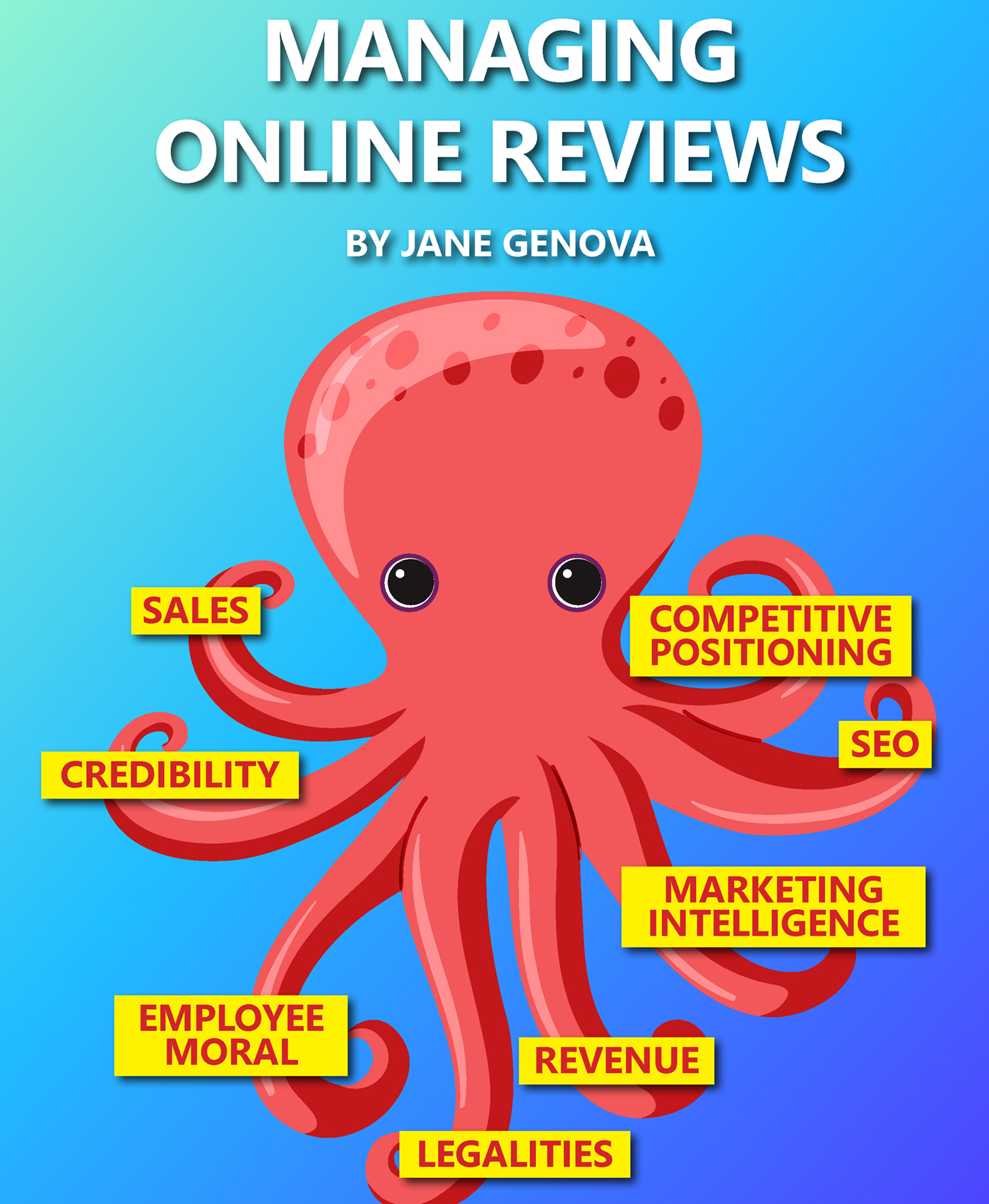
Managing Online Reviews
 By Jane Genova
By Jane Genova
For shoppers, checking online reviews is now an essential part of the buying journey, both in ecommerce and in brick and mortar. According to tech firm Vendasta, more than 90 percent read reviews before making a purchasing decision. Online reviews also influence search engine rankings. In addition, according to TrustPulse, almost 90 percent of job hunters check reviews before applying. Retailers who bungle the process could find themselves questioned by the Federal Trade Commission.
Obviously, managing the online-review process has become as key a function in retail as sourcing, pricing and loss prevention. The three major platforms for reviews are Facebook, Google and Yelp. In addition are public feedback mechanisms on retailers’ own websites.
Retail’s “octopus”
Online reviews operate as a kind of “octopus.” Their arms reach seamlessly and deeply into other major parts of the retail business. Following are eight examples.
Sales. Management consulting firm McKinsey reports that a review with three- or four-star ratings has three times higher sales than those with one star. TrustPulse found that 80 percent of shoppers, while in the store, check reviews on smartphones.
Revenue. According to Software Advice, 86 percent of shoppers are willing to pay more for what is backed with positive reviews.
Competitive positioning. Glowing reviews can provide an edge in the marketplace.
Credibility. Branding expert Terakeet found that 63 percent are likely to trust a business with reviews versus an enterprise with no reviews. Such responses represent digital word-of-mouth input at a time of growing distrust of advertising. For startups, reviews can position the business as legitimate. The more reviews, the more trust, points out Vendasta.
Search engine optimization (SEO). Search engines such as Google factor in reviews for their algorithms. In two-thirds of the rankings, those with the most reviews received the highest in local search, notes ReviewBuzz. Small business is highly dependent on local search. Negative reviews, though, can pull down results, making a business more difficult to find in searches.
Marketing Intelligence. The insights could provide significant information about the need to improve products and processes. The value of that should override the fear of bad reviews. In Forbes, CEO of National Retail Solutions Elie Katz positions as “normal” a mix of negative and positive. He adds, “Negative remarks are just as useful as positive.”
Employee morale and training. Positive reviews can create an aura about the retailer that enhances how employees feel about what they do. Content from the feedback could provide training snippets.
Legalities. Harassing customers for reviews, purchasing reviews, faking reviews and concealing negative reviews have become issues for regulatory scrutiny. The Federal Trade Commission has been paying attention to those matters.
![]() Seven general best practices
Seven general best practices
There are no absolutes in how to manage online reviews. However, over time, there has developed a body of knowledge about what is most productive as well as cost-efficient. Those best practices include the following seven:
Frontloading/maintaining excellence. It is at the front end and on a continual basis that businesses have to ensure the products and processes are excellent. That is the pro-active approach to preventing bad reviews.
Rapid course correction. In this era of transparency, there can be no foot-dragging on what is subpar. An example would be inadequate inventory for lower-priced outdoor apparel.
Open lines of communication. Before formal reviews, there had been the “general store” ethos of openness. Customers felt safe sharing what was on their minds about shopping. Such a current friendly, boundary-free environment could head off posted negative reviews.
Being conversational. Retailers should be responding, in a me-to-you tone, to those who take the time to provide a comment. Often there can be a default to only engage with negative reviews, not positive ones.
Accountability. There has to be a designated member of team responsible for the end-to-end review management process. That does not have to be the whole job description, but it has to be an accountability. The knowledge base must include technologies and legalities.
Requests for and monitoring reviews. The more reviews, the better, be it for branding or SEO.
 When it comes to requests, the manual method is to simply ask for reviews. Those can carry an incentive such as inclusion in a sweepstake or a discount. Note that it can be illegal to be overly aggressive in soliciting reviews.
When it comes to requests, the manual method is to simply ask for reviews. Those can carry an incentive such as inclusion in a sweepstake or a discount. Note that it can be illegal to be overly aggressive in soliciting reviews.
In addition, there are the technologies that automate much of this.
Tools such as Trustpilot, Yotpo and Birdeye, for example, can be plugged into CRM or email processes to transmit requests during the purchase. Others such as Mailchimp or HubSpot can create campaigns. On social media platforms there can be Hootsuite or Sprout Social to facilitate requests for reviews. For more general processes there can be APIs which are integrated into retail systems.
Another set of tools is for monitoring, managing and interpretation. The latter could include analysis of consumer sentiment. Those tools range from Reputation to ReviewTrackers.
Leveraging positive reviews. That feedback provides a gold mine for marketing and sales. With consumer permission, they can be repurposed as testimonials on retailers’ websites and postings on social media. Tool Grade.us automates this.
 Six specialized best practices for negative reviews
Six specialized best practices for negative reviews
Fortunately, there are also best practices for being effective with the realities of negative reviews. Because of the anxiety they can cause, here is a separate section on what retailers should now consider “normal” in doing business.
Avoid panic. Retailers can keep in mind this image: There is plenty of space between the stimulus and the response. Remain in that space while developing strategy. There is the old adage: It is not what happens to a business, it is how the organizations handle the matters.
Recognize when not to engage in a conversation. The tone and language could be so inflammatory that there is nothing to be gained. Research if such a post can be deleted without legal penalty.
Respond in a timely manner. According to TrustPulse, 53 percent expect a response to negative reviews within a week. And 56 percent of those will change their attitude toward a business based on the tone and content of the response that is posted directly following the original review.
Determine venue. Should the matter be handled initially offline, then the conversation moved back online?
Focus on the solution. No matter the issue, the approach should be solution-based, not a defense of, for instance, a policy or mitigating circumstances. Useful is an explanation that retailers are investigating how they conduct business. Meanwhile, a discount can be offered to create goodwill.
Alert employees about the review implications. Clearly, given the importance of reviews, this is a teachable moment.
 High value part of the business
High value part of the business
Managing online reviews is serious business. It has to be embedded in all the systems because it does impact the bottom line. In The Wall Street Journal, Harriet Troy observes, “Online reviews are an increasingly important … form of currency in the global economy.”
Jane Genova is a business writer and career coach. Her articles have been published in AOL, Motley Fool, Yahoo Finance, Payment Week, Business.com, Daily Business News and O’Dwyer’s Public Relations. She co-authored the book, “The First Critical Years of Your Professional Life.”



